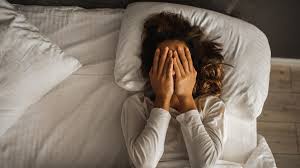First and foremost, sleep is a vital component of human health and wellness since it is necessary for normal physical, mental, and emotional functioning. Nonetheless, many people may find it challenging to obtain a decent night's sleep due to a variety of sleep-related issues. While sleep disorders such as insomnia are probably the most well-known, many other conditions can also interfere with sleep patterns and negatively impact quality of life. This article will cover many sleep disorders in addition to insomnia, including their symptoms, causes, and potential remedies.
Identifying Sleep Disorders:
"Sleep disorders" encompass a range of ailments that disrupt the normal circadian rhythm of awake and sleep. These illnesses can be categorized under several sections, including respiratory problems related to sleep, insomnia, parasomnias, movement disorders, and disorders of the circadian rhythm. While many people experience difficulty falling or staying asleep due to insomnia, other sleep disorders are often disregarded despite having a significant detrimental impact on daily functioning and overall health.
Sleep-Related Disorders of Breathing:
One common sleep-related breathing problem is obstructive sleep apnea (OSA), which is characterized by recurring episodes of full or partial upper airway blockage during sleep. People with OSA commonly experience gasping or choking sensations, loud snoring, and daytime fatigue as a result of sleep disturbance. Untreated OSA can have negative health repercussions, such as heart disease, hypertension, and cognitive deterioration. In severe situations, OSA may be treated with surgery, dental appliances, and continuous positive airway pressure (CPAP) therapy.
Circadian rhythm disorders:
These problems lead to a disruption in the body's natural clock, which makes it challenging for the body to coordinate its sleep pattern with the 24-hour day-night cycle. One typical circadian rhythm issue is delaydent sleep-wake phase disorder (DSPD), which is characterized by a delayed sleep onset and difficulty waking up in the morning. Individuals with DSPD often struggle to maintain a consistent sleep schedule, which often leads to sleep deprivation. Behavioral therapies, light therapy, and chronotherapy—which resets the circadian rhythm—can all be used as treatments for circadian rhythm issues.
Parasomnias are abnormal sleep-related behaviors or experiences that typically occur during specific stages of sleep, such as non-REM or REM (rapid eye movement) sleep. REM sleep behavior disorder (RBD), sleepwalking, and sleep terrors are a few types of parasomnias. The defining feature of RBD is the reenactment of violent and vivid nightmares during REM sleep that have the potential to hurt the patient or their sleeping partner. Apart from implementing safety measures to ensure individuals' safety during episodes, managing the underlying causes of parasomnias, such stress or sleep deprivation, could be a component of the treatment plan.
Disorders of Movement:
Involuntary movements or sensations in the legs during sleep might be a symptom of movement disorders. Periodic limb movement disorder (PLMD) and restless legs syndrome (RLS) are two examples of these illnesses. Patients with RLS may experience uncomfortable sensations in their legs, such as tingling or crawling, which disappear when they move. When you have PLMD, your legs move constantly as you sleep, which often leads to several arousals and an irregular sleep schedule. For movement disorders, medication is one viable therapy option that might improve sleep quality and alleviate symptoms.
Recognizing Symptoms and Seeking Assistance:
Successful treatment of sleep disorders and accurate diagnosis depend on the capacity to recognize symptoms other than insomnia. Some common symptoms include sleeping through the day, gasping or choking during the night, nocturnal awakenings, and unusual actions throughout the night. If you suspect that you or someone you know may have a sleep disorder, it is vital that you get evaluated by a physician with experience in treating sleep disorders. A comprehensive sleep study may include clinical examination, sleep diary documentation, nightly polysomnography, and other specialist tests to determine the underlying cause of sleep disturbances.
Conclusion:
Finally, it should be noted that sleep disorders encompass a broad spectrum of ailments that extend beyond insomnia and can significantly impact an individual's overall health and quality of life. Finding the right diagnosis and therapy for respiratory problems associated with sleep, circadian rhythm abnormalities, parasomnias, and movement disorders is essential to achieving better sleep outcomes. We can assist people in getting the restorative sleep they require to preserve their health and wellness by raising awareness of the various types of sleep problems and how to manage them.


No comments yet